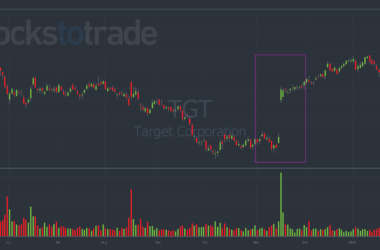Happy Monday, traders…
Jeff here.
It’s no secret — the stock market is correcting. The Invesco QQQ Trust (NASDAQ: QQQ) is down over 11% in three weeks, erasing more than half of the yearly gains for the tech-heavy index:

You shouldn’t be shocked. I warned you about this. I’ve been talking about the existence of a widespread market bubble for months.
And now that it’s starting to pop, I’m not saying we’re entering a full-fledged bear market yet, but I believe this still applies…
There’s an old saying among traders … “Fortunes are made in bear markets.”
Have you ever wondered how sophisticated investors make money hand-over-fist during market crashes … while ordinary, everyday people lose their life savings?!
Answer: The ‘smart money’ knows how to trade different options strategies effectively during market downturns. They adapt their plan to fit the moment.
If you aren’t versed in options trading, you’ll be limited to two moves: long stocks or short stocks.
This forces you into a binary decision that limits your ability to profit in particular market environments (like this one).
The ‘buy and hold’ people are stuck watching their portfolios drain precious capital day after day, powerless to do anything to stop it.
However, options can open up a whole new world of trading opportunities — especially when near-term stock price direction is hard to predict.
With that in mind, let me show you why the worst markets for long-term investors can actually be some of the best times for options traders…
Why Puts Options Are the Best Way to Short
The biggest advantage of trading put options (over short-selling) is defined risk.
I don’t know why anyone would naked short common shares when the ‘option’ to buy puts is on the table (excuse the pun).
Shorting stocks has theoretically unlimited risk. If the stock you’re shorting rips to new all-time highs, you’ll lose more money than you invested in the position.
This can put you at risk of receiving a margin call and blowing your entire account up.
On the contrary, if you buy puts, you can never lose more than your initial principal investment.
Additionally, put options have considerably more upside on the way down than common-share shorts.
Say you’re watching Stock XYZ and it’s trading for $100…
If you sell ten shares short, and the stock goes to $0, you could make $1,000 — a 100% gain on your principle.
Not bad, but not great for the amount of risk you’re taking.
But in the same hypothetical, where XYZ goes to $0, the put options on any strike price would pay several multiples more than the common-share short.
My point is: You can potentially make more money — while simultaneously risking less — on a put position vs. a common short position.
3 Alternate Strategies for Market Corrections
Collars
- How it works: This involves owning the underlying stock, buying a protective put, and selling a call option at a higher strike price.
- Why it works: The protective put limits downside risk, while the premium received from selling the call option helps offset the cost of the put. This strategy caps both potential gains and losses.
Long Straddles
- How it works: This strategy involves buying both a call and a put option at the same strike price and expiration date.
- Why it works: This can be profitable if there is significant movement in the stock price, regardless of the direction. If the market declines sharply, the put option will gain value.
Long Strangles
- How it works: Similar to a straddle, but you buy a call and a put option with different strike prices, typically out-of-the-money.
- Why it works: This strategy is cheaper than a straddle and profits from significant movements in the stock price. If the market falls significantly, the put option will gain value.
Real-World Examples of Bear-Market Fortunes
It’s no coincidence that some of the greatest options trades of all time have taken place during major market corrections:
1987: In one of the most talked-about options trades in history, Paul Tudor Jones called the 1987 market crash before it happened. He bought a ton of puts on the major indexes. Then, on October 19, 1987, the Dow Jones plunged 22% — while Jones bagged approximately $100 million on the trade.
1987: Trader Andy Krieger made a name for himself shorting New Zealand’s dollar, sometimes called the kiwi, as the currency collapsed during the market crash of 1987. The kiwi plummeted as much as 5% while Krieger made $300 million for his employers
2015: Best-selling author (and former full-time options trader) Nassim Nicholas Taleb bought cheap SPY puts and VIX calls as the S&P 500 tanked 8% and the VIX surged 50%. Taleb’s entire portfolio increased by 20% while he profited more than $1 billion in a single day entirely on bearish options contracts.
2018-2020: London-based hedge fund Ruffer Investment Management purchased an eye-popping amount of volatility insurance from 2018 to 2020, then profited $2.6 billion in the pandemic selloff.
As you see, there’s a reason why many of the greatest options trades in history were bearish — fortunes are made in bear markets.
Rather than seeing this bearish environment as a glaring negative, I want you to start seeing the opportunities in the wake of the carnage.
This is why we trade options — it gives us the ability to take advantage of any market scenario.
Happy trading,
Jeff Zananiri
P.S. My brand-new, AI-powered trading system — which can detect algorithmic glitches in real-time with a 90% accuracy rate — has already led to explosive gains like 216% on CHWY calls in 24 hours* and 200% on QCOM puts in 48 hours!*
Click here now to be one of the first 500 people to claim a 50% off GAMMA CODE membership.




